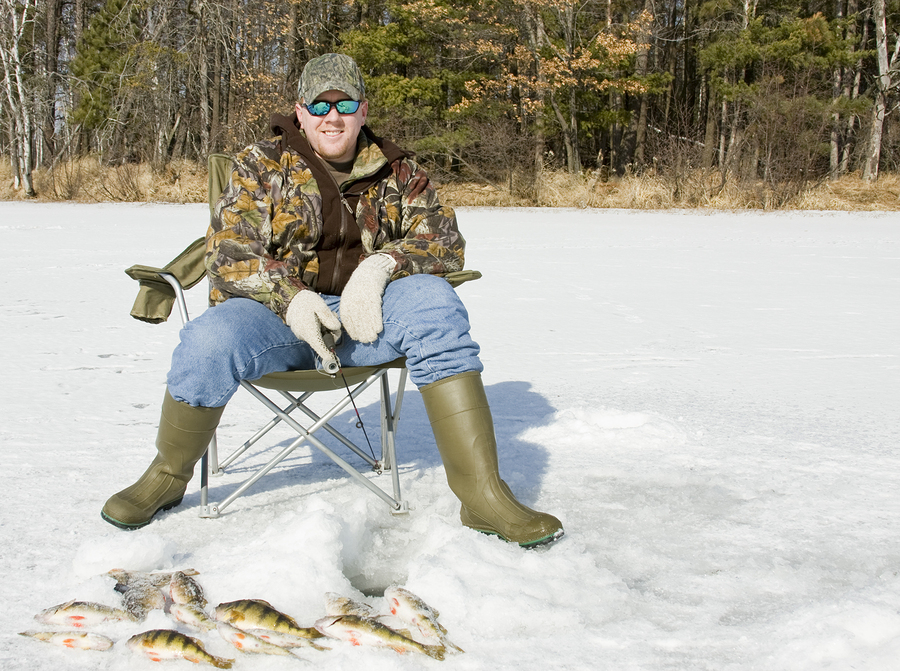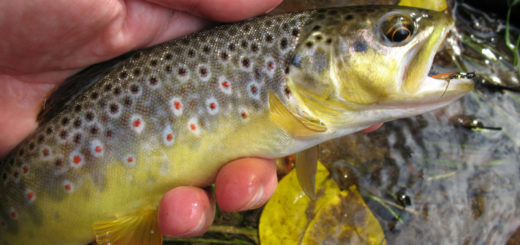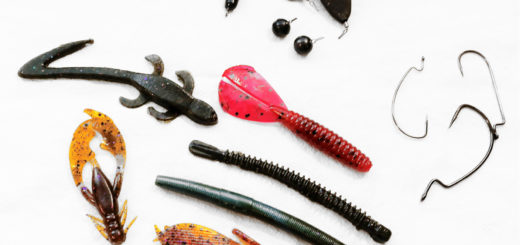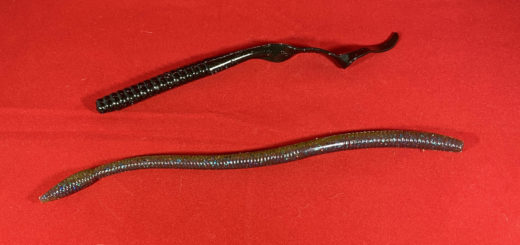For those who love to fish in the summertime, winters can be long and boring. To combat that, many anglers decide to take up ice fishing. While the concept is the same, there are some differences, but many who enjoy open water fishing can quickly warm up to ice fishing, too.
The same fish can be caught through the ice as from a boat. Of course, larger fish such as Musky and Northern Pike can be difficult to get up through a hole in the ice. For that reason, many anglers concentrate on pan fish and walleye at this time of year. Fish caught out of cold water always have a cleaner taste. That is another reason so many people enjoy ice fishing. Here are a few things you will need before you head out onto the ice.
Ice Fishing Equipment
There are a few pieces of equipment that you will need before you head out. The first is an ice auger. Whether you decide to fish with a jig pole or tip ups, you will need a way to drill a hole through the ice. Ice augers come in manual and gas-powered varieties. Gas-powered augers are popular with avid wintertime anglers. They make short work of thick ice, but they do cost a bit more than manual augers.
Next it is good idea to invest in a sled of some sort.
Even a child’s plastic sled will work fine. This is useful for dragging all of your gear out onto the lake. Many people also use a 5-gallon bucket in which to carry their rods, tip ups, and an ice scoop. You will need the scoop to keep the hole free of ice while you are fishing. It has a long handle and looks a bit like a colander, with holes in it to let the water drain out while scooping the ice our of the hole.
In lieu of a 5-gallon bucket, companies such as Frabill make a bucket with a lid that doubles as a stool while you’re out fishing. This is a great investment, too.
You may also want a pop-up ice shack for days that are windy or bitterly cold. But that is something that can wait. It is not necessary to have immediately. Many people prefer to fish without an ice shack because they are ore mobile and can move around the lake easier.
If you have a handheld GPS that you use for fishing in the summertime, that can be very useful, too. Often the underwater cribs and brush piles that you have marked while out fishing in the summer will still hold fish in the winter. Having that handheld GPS with you can help you find those things more quickly.
Ice Fishing Gear
There are two main ways that most ice anglers use to get started. One is called a tip up. They can be purchased at any sporting goods store or in the fishing department at a big box store. There is no need to invest in expensive tip ups from the start.
They can be had fairly inexpensively. The people at the local sporting goods store or tackle shop can put line on the tip ups for you and help you decide which line is best for what you want to do. With tip ups, you will simply bait the hook and set the tip up. Place it over the whole and wait for the flag to pop up.
This means you have a bite. Most often live bait is used when using tip ups. The live bait, whether it is minnows or wax worms, will have an action of its own and does not need movement from the angler to attract fish.
Others prefer to fish more actively than just setting tip ups and waiting. Still others employ both options at the same time. Check your local regulations to see how many lines you can have in the water at the same time. For those who want to be more active, there are ultra-light jig poles.
Again, your local tackle shop can help you select just the right rod and reel for your ice fishing needs. Many who use jig poles also use a variety of artificial lures. Jigging spoons are a great option. They come in a huge array of colors and many different sizes.
Your local tackle shop is a great place to get to know what’s working and what’s not. Otherwise, trial and error is a tactic used by many. You will also need some ice fishing jigs. These can be tipped with a soft plastic grub or with live bait. Wax worms and minnows are popular choices.
Keep in mind, though, that you will need to keep your live bait from freezing while you are out on the ice in order to keep it alive. Many anglers keep their worm container in an inside pocket to help keep them warm.
Ice Fishing Bait
Minnows and wax worms, as discussed, are a great starting point for ice fishermen. They are fairly inexpensive and, in the case of wax worms, can be kept in your refrigerator to use on another trip if you won’t use them all in one outing. Ice fishing jigs can be tipped with either of these live bait options.
Artificial bait is also used for ice fishing. Jigging spoons put off a flash, even under the ice, when jigged vertically. That flash attracts fish and entices them to bite. There are also a great number of hard bodied baits that somewhat resemble crank baits. These are used for vertical jigging. A few examples of these baits are the Rapala Jigging Rap and the Salmo Chubby Darter.
These resemble injured bait fish when jigged vertically, and a bigger fish will see it as an easy meal. Blade baits are also a popular option with some ice fishermen. Examples of blade baits include the Johnson Thinfisher and the Heddon Sonar Flash. A small variety of one or two of these types of artificial lures are probably enough to get you started.
Starting out in ice fishing doesn’t need to be expensive. But… as with open water fishing, it can be as expensive as you make it. Once you become familiar with different techniques and fishing lures, your arsenal will naturally expand, just as with other types of fishing.
Ice Fishing Safety
No discussion of ice fishing is complete without touching on safety. Anglers should never assume any ice is completely safe. Ice conditions change from day to day and from one area of a lake to another. Always make sure that someone knows where you are fishing and when you plan to be back. Carrying a fully charged cell phone is a good idea in case something happens and you can’t get back in time.
Fishermen’s ice picks are sold in nearly every tackle shop that has ice fishing equipment. These are a simply two small hand-held ice picks attached together by a string or a plastic cord of some sort. You should wear these around your neck, with one pick available for each hand. If you should fall through the ice, you can use these picks to help you get back onto the ice.
Always wear layers of clothing with a water-resistant layer on the outside. Layers of clothing will help keep you warm, and staying dry is just as important. A good pair of gloves is also a great idea. You boots should be waterproof, as you will often be walking through slush and snow to get to your fishing spot.
One last piece of clothing that many ice anglers forgo, but really should wear, is a PFD. It may seem strange to be out on the ice with a life jacket on. But, if the worst should happen, and you fall through the ice, a life jacket may just save your life. Falling into frigid water is a huge shock to your body. You may find yourself initially unable to move.
Or, you may hit your head on the ice as you fall into the water. In both instances, a PFD (Personal Flotation Device) will keep you head above water. This could give you those few precious minutes to save yourself or to allow another person in your party to pull you out of the ice. Consider wearing a PFD. You might be glad you did.
Overall, ice fishing does not need to be an expensive sport to get into. With a few tips ups, a jig pole, some live bait and some ice fishing jigs, you could be all set. Make sure your equipment is in good working order before you head out onto the lake. The people at your local tackle shop are an invaluable resource. Use their knowledge to help you learn where to find the fish and what they are eating.
Last but certainly not least, make sure to stay safe out on the ice. Dress warmly and let someone know where you are going. Fish with others whenever possible. When you take up ice fishing, the long, cold winters can get your heart racing just like cranking up the outboard and heading across the lake.












